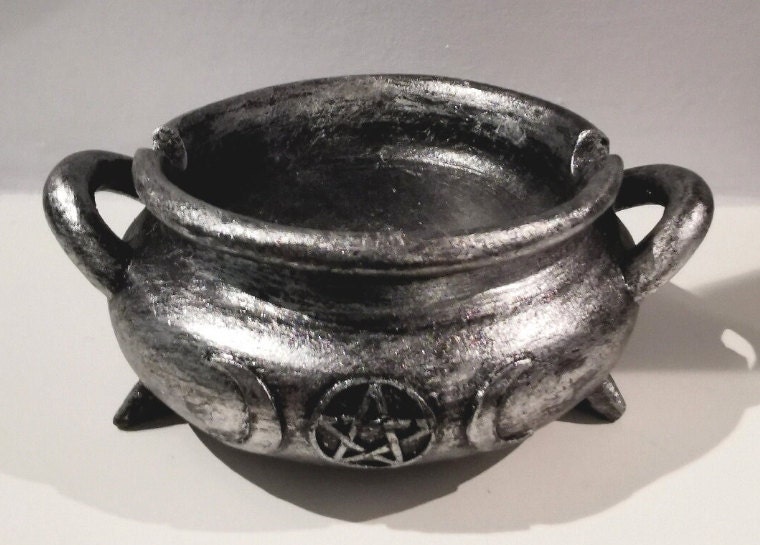The cauldron has been a powerful symbol of mystery, transformation, and magic for quite a while. This unassuming pot, often depicted bubbling over a fire, has roots in mythology, folklore, and everyday life. While many associate it with witches and sorcery, the cauldron holds a deeper significance that transcends cultural boundaries. Whether as a tool of alchemy, a source of nourishment, or a gateway to the unknown, the cauldron remains an enduring icon that has fascinated people for centuries.
The cauldron has been a fundamental object in human civilization for thousands of years. Archaeologists have discovered ancient cauldrons made of bronze, iron, and clay, dating back to prehistoric times. These early vessels were primarily used for cooking and boiling water, making them essential for survival. However, their utility quickly extended beyond the kitchen. In many ancient cultures, cauldrons were used in religious rituals, symbolizing abundance, rebirth, and divine wisdom. In Celtic mythology, the cauldron played a crucial role in many stories and was often linked to powerful deities. The Cauldron of Dagda, for example, was a magical vessel that never ran empty, providing endless nourishment to those who needed it. This idea of the cauldron as a source of life and renewal persisted throughout various legends, reinforcing its connection to magic and transformation.
The cauldron's significance is not limited to Celtic tales. In Norse mythology, the Mead of Poetry was brewed in a mystical cauldron, granting wisdom and poetic inspiration to those who drank from it. Similarly, in Greek mythology, the sorceress Medea used a cauldron to restore youth and create powerful potions. These stories highlight the cauldron’s association with transformation and its ability to bridge the gap between the mortal and the divine. In European folklore, cauldrons are often linked to witches and magic. The famous image of three witches huddled around a cauldron, stirring a bubbling potion, originates from Shakespeare’s Macbeth. The witches’ chant, “Double, double toil and trouble; Fire burn and cauldron bubble,” has become an iconic representation of supernatural power. This imagery, reinforced by centuries of storytelling, has cemented the cauldron’s reputation as a vessel of enchantment and mystery.
Alchemy, the medieval practice of attempting to transform base metals into gold, also utilized the cauldron as a crucial element. Alchemists believed that the cauldron symbolized the process of purification and transmutation. The Philosopher’s Stone, a legendary substance said to grant eternal life and wisdom, was often depicted being created within a cauldron. This idea of transformation—whether physical, spiritual, or intellectual—continues to resonate with those who view the cauldron as a metaphor for personal growth and enlightenment. The concept of the cauldron as a transformative vessel also appears in spiritual and metaphysical traditions. In some modern pagan and Wiccan practices, the cauldron represents the womb of the Earth, symbolizing fertility, creativity, and the cycle of life and death. It is often used in rituals to mix herbs, burn incense, or hold water, serving as a sacred tool for spiritual connection.
While the mystical aspects of the cauldron are captivating, its practical uses should not be overlooked. In many cultures, the cauldron has been a staple of communal gatherings, where large quantities of food were prepared and shared. From medieval feasts to humble family meals, the cauldron has long been associated with nourishment and hospitality. In some traditions, the communal cauldron also held social and political significance. In ancient China, large bronze cauldrons called ding were symbols of power and authority, often used in ancestral ceremonies. In parts of Africa and the Caribbean, cauldrons are still used in traditional cooking, preserving cultural heritage and culinary practices. The cauldron’s role in these societies emphasizes its ability to bring people together and sustain communities.
The cauldron’s presence in literature, film, and art has ensured its continued relevance in modern times. The image of a cauldron is frequently used in fantasy novels and movies, often appearing in stories about witches, wizards, and magical beings. The Harry Potter series, for example, features cauldrons as essential tools for potion-making at Hogwarts School of Witchcraft and Wizardry. This reinforces the traditional association between cauldrons and mystical practices. The Black Cauldron, a Disney animated film based on Lloyd Alexander’s The Chronicles of Prydain, is another example of the cauldron’s role in fantasy storytelling. In the film, an enchanted cauldron has the power to create an invincible army, highlighting the vessel’s legendary abilities. The enduring presence of the cauldron in popular culture showcases its ability to capture the imagination and convey themes of mystery, power, and transformation.
Despite the passage of time, the cauldron remains a potent symbol in both mystical and everyday contexts. It represents change, renewal, and the unknown, making it a fitting emblem for those who seek knowledge and personal growth. Whether as a practical cooking tool, a mystical artifact, or a literary device, the cauldron continues to inspire curiosity and wonder. In many ways, the cauldron is a reflection of humanity’s endless quest for transformation. Just as alchemists once sought to turn lead into gold, people today strive for self-improvement and deeper understanding. The cauldron reminds us that change is always possible, and that within the depths of the unknown, there is always the potential for something magical to emerge.


